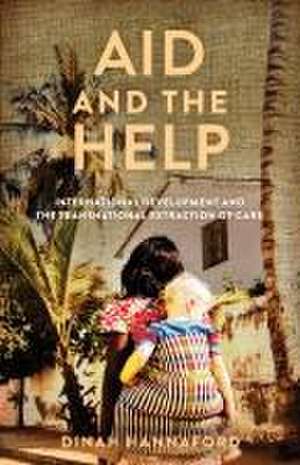Aid and the Help – International Development and the Transnational Extraction of Care: Globalization in Everyday Life
Autor Dinah Hannaforden Limba Engleză Paperback – 23 mai 2023
Hiring domestic workers is a routine part of the expat development lifestyle. Whether working for the United Nations, governmental aid agencies, or NGOs such as Oxfam, Save the Children, or World Vision, expatriate aid workers in the developing world employ maids, nannies, security guards, gardeners and chauffeurs. Though nearly every expat aid worker in the developing world has local people working within the intimate sphere of their homes, these relationships are seldom, if ever, discussed in analyses of the development paradigm and its praxis. Aid and the Help addresses this major lacuna through an ethnographic analysis of the intersection of development work and domestic work. Examining the reproductive labor cheaply purchased by aid workers posted overseas opens the opportunity to assess the multiple ways that the ostensibly "giving" industry of development can be an extractive industry as well.
| Toate formatele și edițiile | Preț | Express |
|---|---|---|
| Paperback (1) | 158.72 lei 3-5 săpt. | +12.14 lei 4-10 zile |
| MK – Stanford University Press – 23 mai 2023 | 158.72 lei 3-5 săpt. | +12.14 lei 4-10 zile |
| Hardback (1) | 529.29 lei 6-8 săpt. | |
| MK – Stanford University Press – 23 mai 2023 | 529.29 lei 6-8 săpt. |
Preț: 158.72 lei
Nou
30.38€ • 33.01$ • 25.54£
Carte disponibilă
Livrare economică 31 martie-14 aprilie
Livrare express 14-20 martie pentru 22.13 lei
Specificații
ISBN-10: 1503635503
Pagini: 228
Dimensiuni: 140 x 215 x 17 mm
Greutate: 0.3 kg
Editura: MK – Stanford University Press
Seria Globalization in Everyday Life
Notă biografică
Cuprins
1. Finding Help in the Informal Economy
2. Security and Everyday Bordering
3. Stratigraphies of Mobility
4. Inequalities of the World Personified
Conclusion: Conclusion










